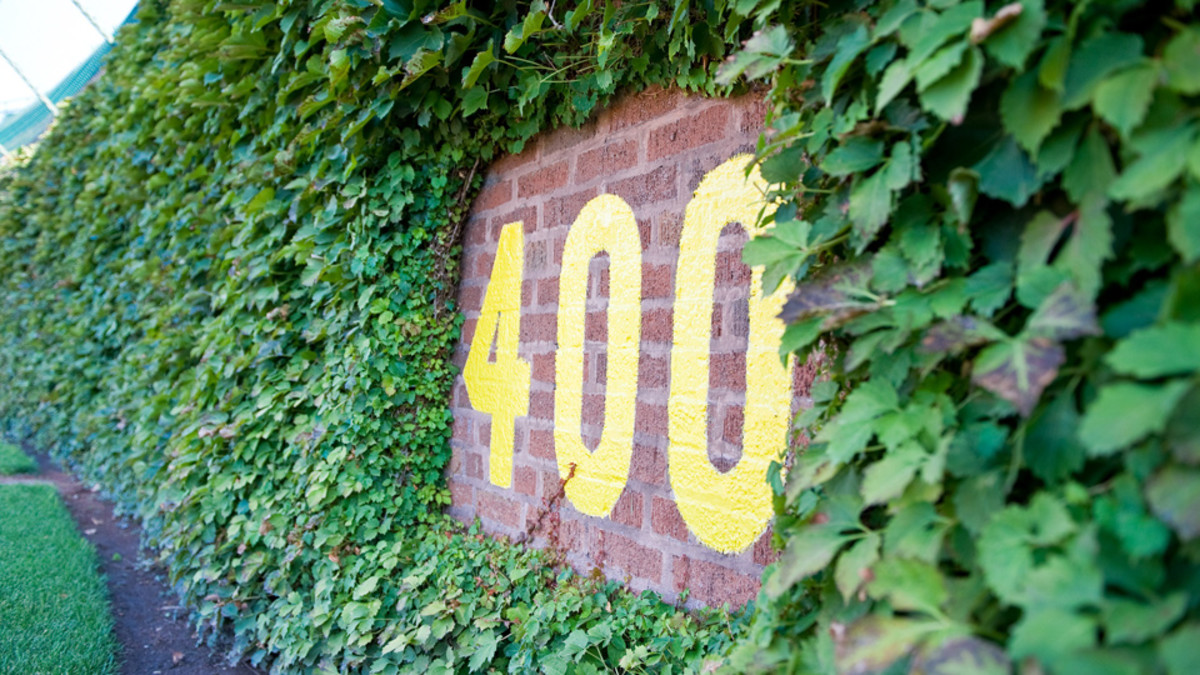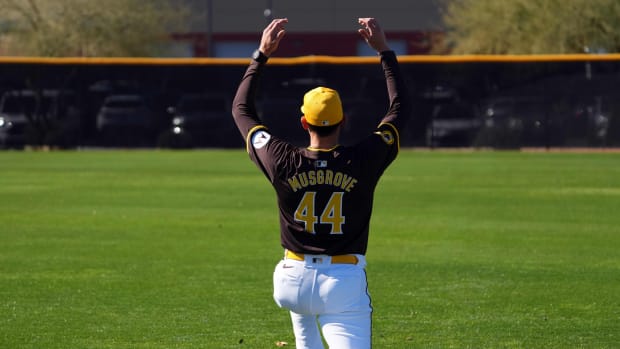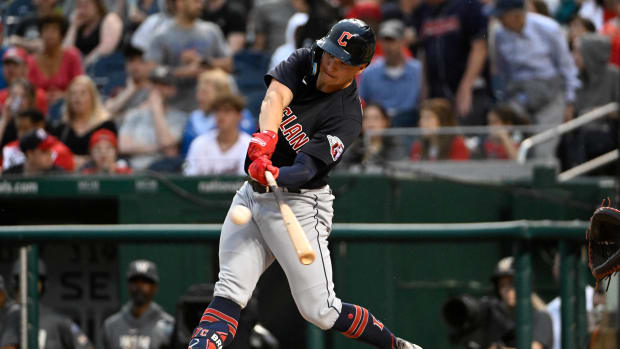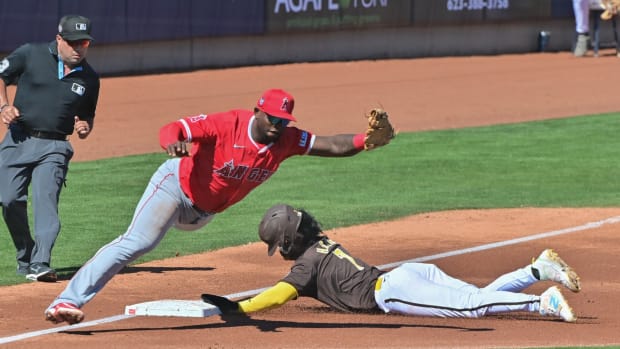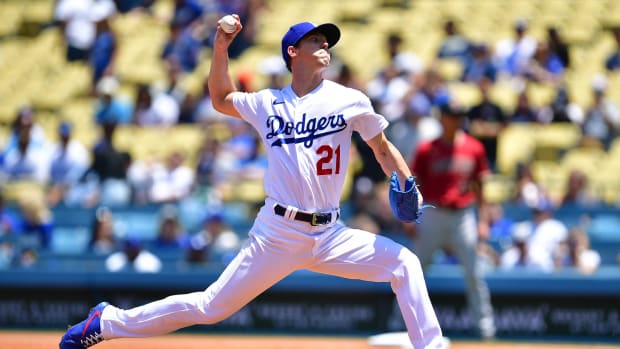Ballpark Quirks: Embracing the brick-and-ivy history of Wrigley Field
Ballpark Quirks is a series on the distinctive features and oddities that make up each of MLB’s 30 parks. Today’s pick: Wrigley Field’s brick and ivy.
Let’s talk brick and ivy.
The very concept of a ballpark quirk is part and parcel of discussions of old parks, such as Fenway Park and Wrigley Field. In Chicago, you can wander the grounds and find oodles of quirkiness to delight you, from the elephant gate in rightfield — they built the thing large enough to let elephants in for the circus — to the much-beloved marquee that recently went back to its original 1934 green color, or even the hand-operated scoreboard, installed in 1937. We could talk nautical flags — the Wrigley family loved sailing, so they brought in this touch — or the park’s original 310-foot leftfield line. Then there are the firsts that the ballpark brought us, such as permanent concession stands behind the seats or fans having the luxury of pocketing foul balls.
But of all the quirks we can dig out of the 100-year-old stadium designed by Zachary Taylor Davis, the most well-known came from the Wrigley which largely took shape in 1937. Before then, Wrigley Field had character, but not the same style as the stadium originally built in 1914 at the corner of Addison and Sheffield streets in north Chicago. Then-owner P.K. Wrigley wanted general manager Bill VeeckJr. — the eventual owner of three MLB clubs, including the Chicago White Sox — to help impress investors and visitors by creating a park-like setting, similar to ballparks Wrigley had seen in California. The experiment? A completely new style of outfield wall to separate the field from the new grandstands.
First came the brick, but that needed a little life. The ivy — a mix of Boston ivy and Japanese bittersweet — was pure decoration, grabbing a small section of brick to start. In ’37, Veeck started with just a small portion, and the look was a hit, eventually expanding across the entire outfield. Now the Chicago ivy mix covers an 11 1/2-foot-tall wall, trimmed only by handheld sheers to keep it from overtaking the entire park.
As ivy is wont to do, even the thought of it spread aplenty. Vendors have sold clippings, with the offshoots seen peppering yards throughout the neighborhood. The Cubs even once tried replicating the popularity of the ivy by growing it on the outside of Wrigley Field, according to Carl Rice, the team's vice president of ballpark operations. But the love of ivy proved too alluring for those visiting Wrigley, and the new clippings were repeatedly uprooted and taken. So the ivy remains inside, covering decades-old brick (some parts of the wall have been updated since the original installation), with nostalgia unmatched across Major League Baseball.
The brick and ivy weren’t the only great additions in ’37. The giant scoreboard — originally a reddish-brown color, but painted green in 1944 to absorb sunlight better — required help from engineering students from nearby colleges to get it constructed safely. It boasts over 300 openings, some simply there to allow wind to pass through. With the upper decks preceding the great 1937 additions by just a few years, the quirkiness of Wrigley Field traces back to its grandest of decades, ivy and all.
Tim Newcomb covers stadiums, design and gear for Sports Illustrated. Follow him on Twitter at @tdnewcomb.






























